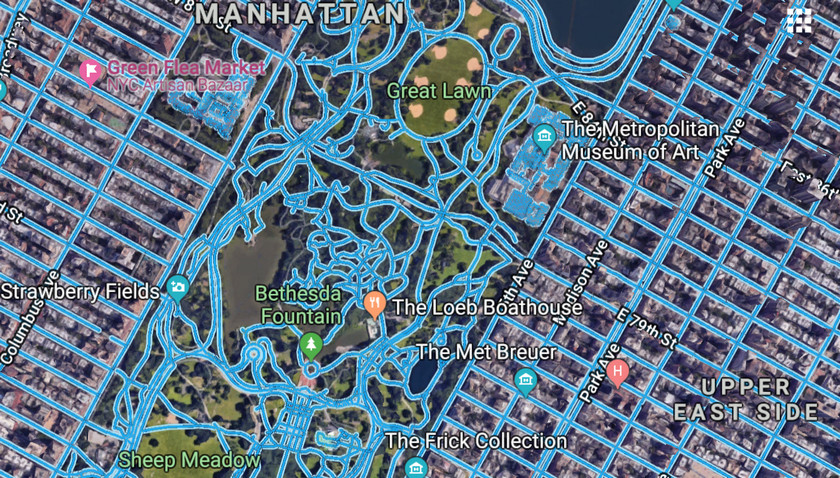Neutral network MIT finds roads that Google Maps does not know about

Google and other companies spend billions annually on maintaining the relevance of their cards. This is hellish labor, especially when it comes to roads. Their application is usually handled by living staff who physically can not test more than 30 million kilometers of transport routes in the world. But soon the situation may change. Specialists of the CSAIL laboratory at the Massachusetts Institute of Technology MIT have created a neural network capable of finding roads in satellite photographs with an accuracy of 45% higher than in existing solutions.
How it works?
The system called RoadTracer uses high-resolution terrain images from Google Earth and the road network scheme in OpenStreetMap. The start point is taken by the already known site. The neural network scans the surrounding area and determines where the road is likely to continue. She switches to this place, repeats the same actions again. Step by step on the map will appear roads that your navigator does not know about.
When using traditional segmentation methods , mistakes often occur if the road itself has trees growing or the shadow of buildings is falling on it. In addition, algorithms may not notice a dead end and connect two road sections, simply because they are near.
RoadTracer was trained in photographs of 25 cities in six countries of North America and Europe. In tests on the example of the map of New York, the system correctly identified 44% of traffic junctions against 19% with the standard approach. The technology was twice as effective, but developers still have much to do. The authors of the project themselves admit that satellite images alone are not enough. In the future, they are going to supplement them with GPS data.
Why is it important?
The MIT offered a quick and less expensive way of applying roads to the map. It is great for areas of active development with ever-changing terrain and sparsely populated areas, where the cars of the Google Street View film crew are unlikely to ever reach.
Sources: MIT , Digital Trends